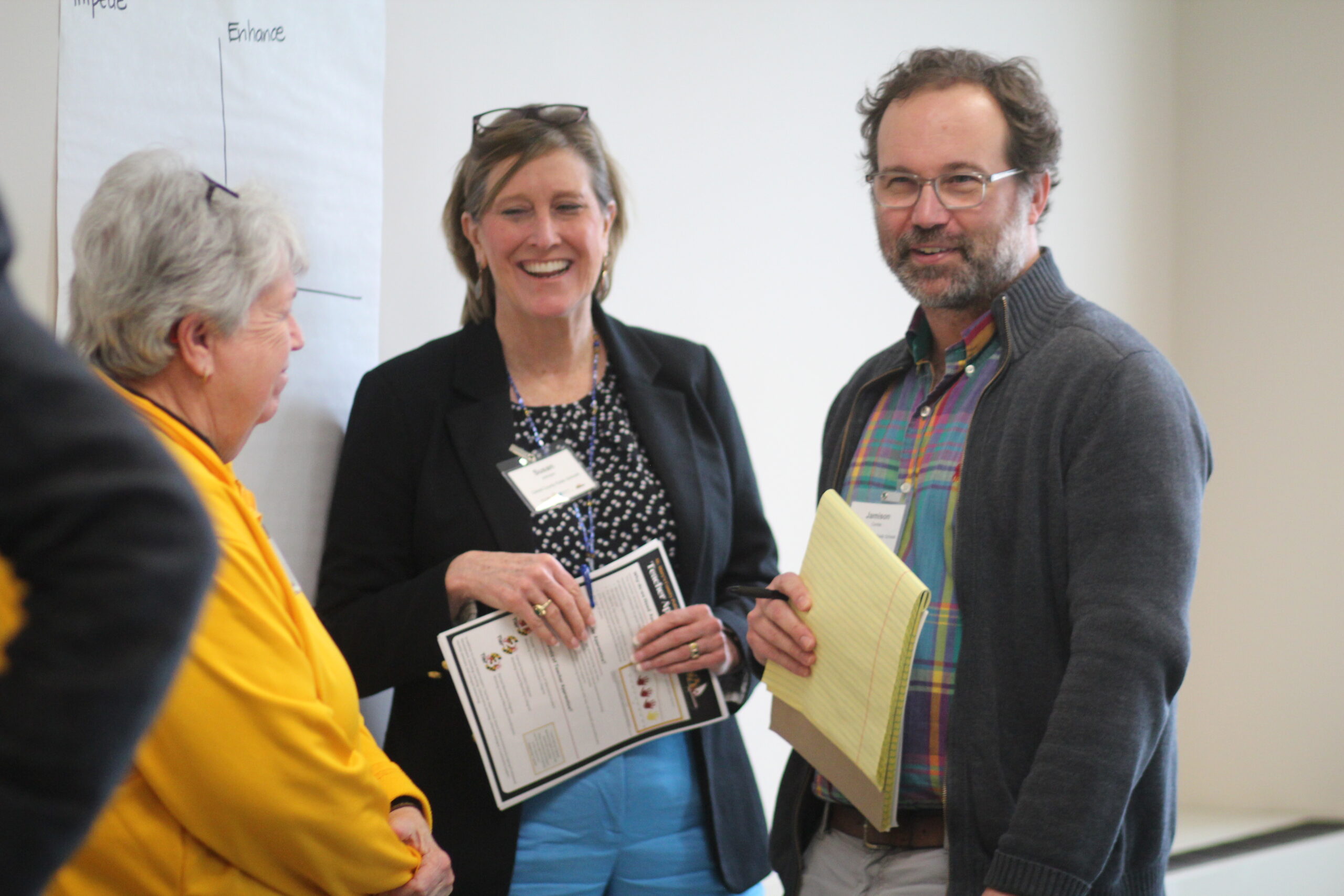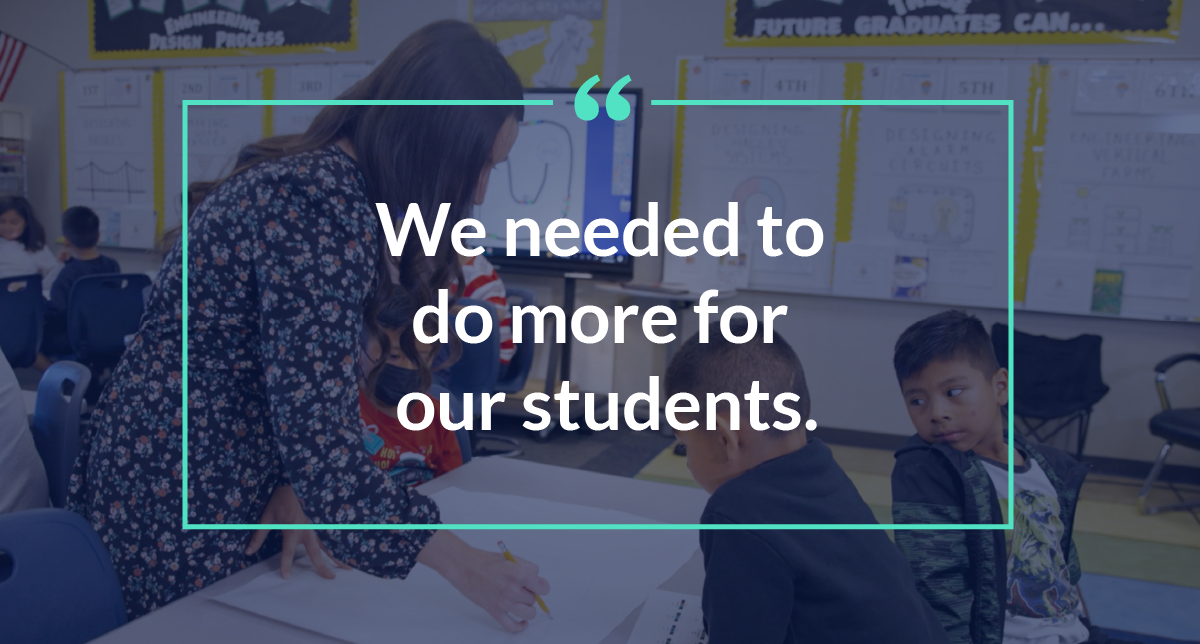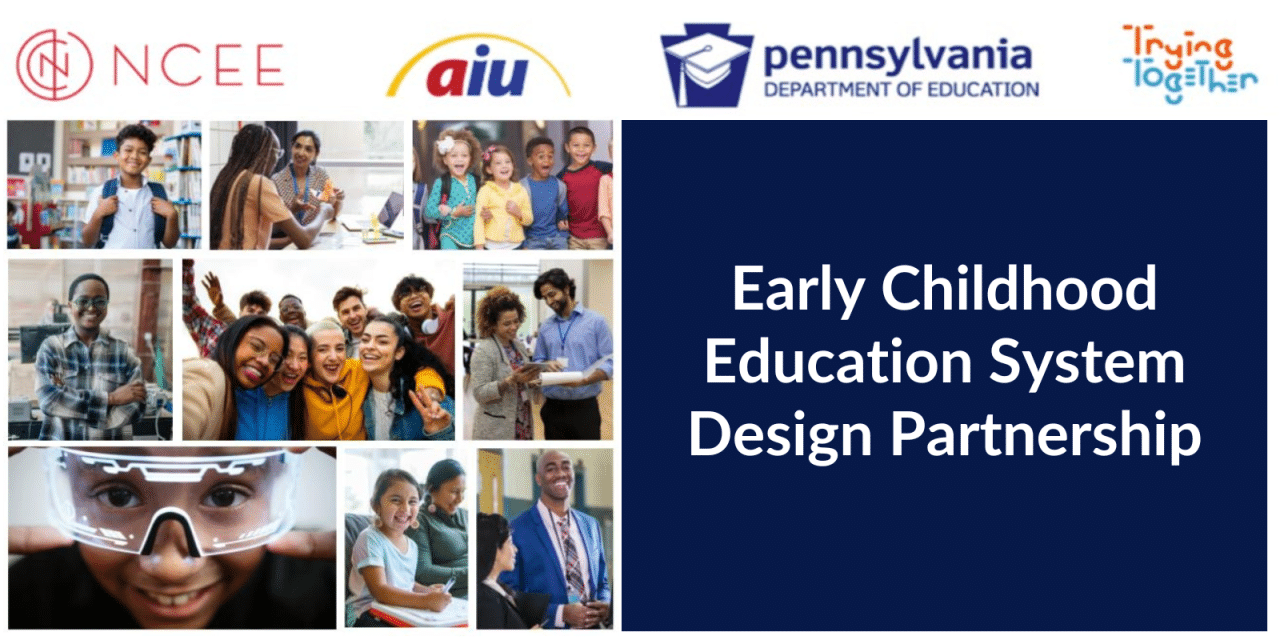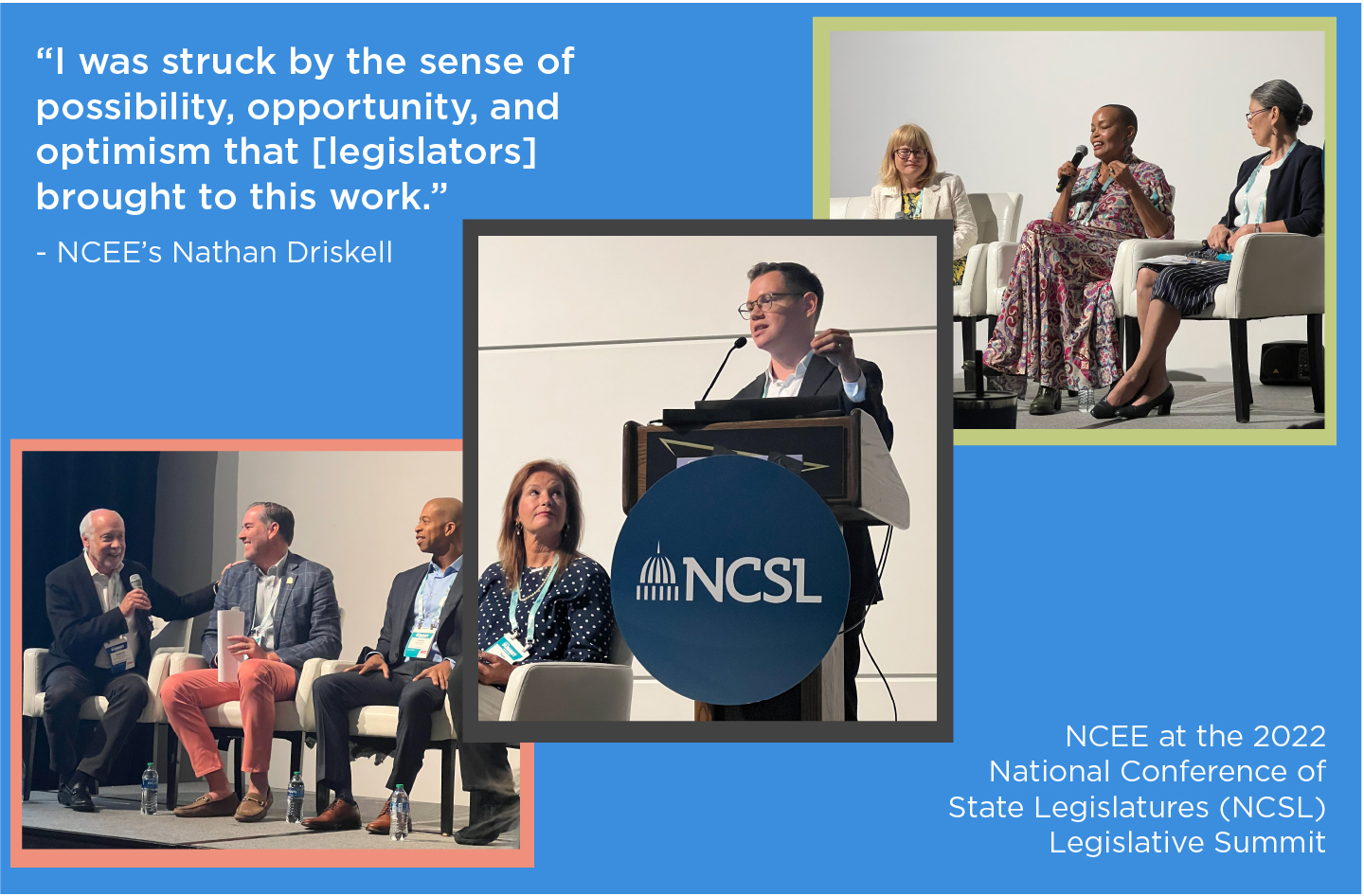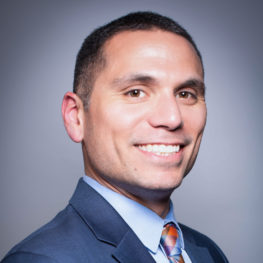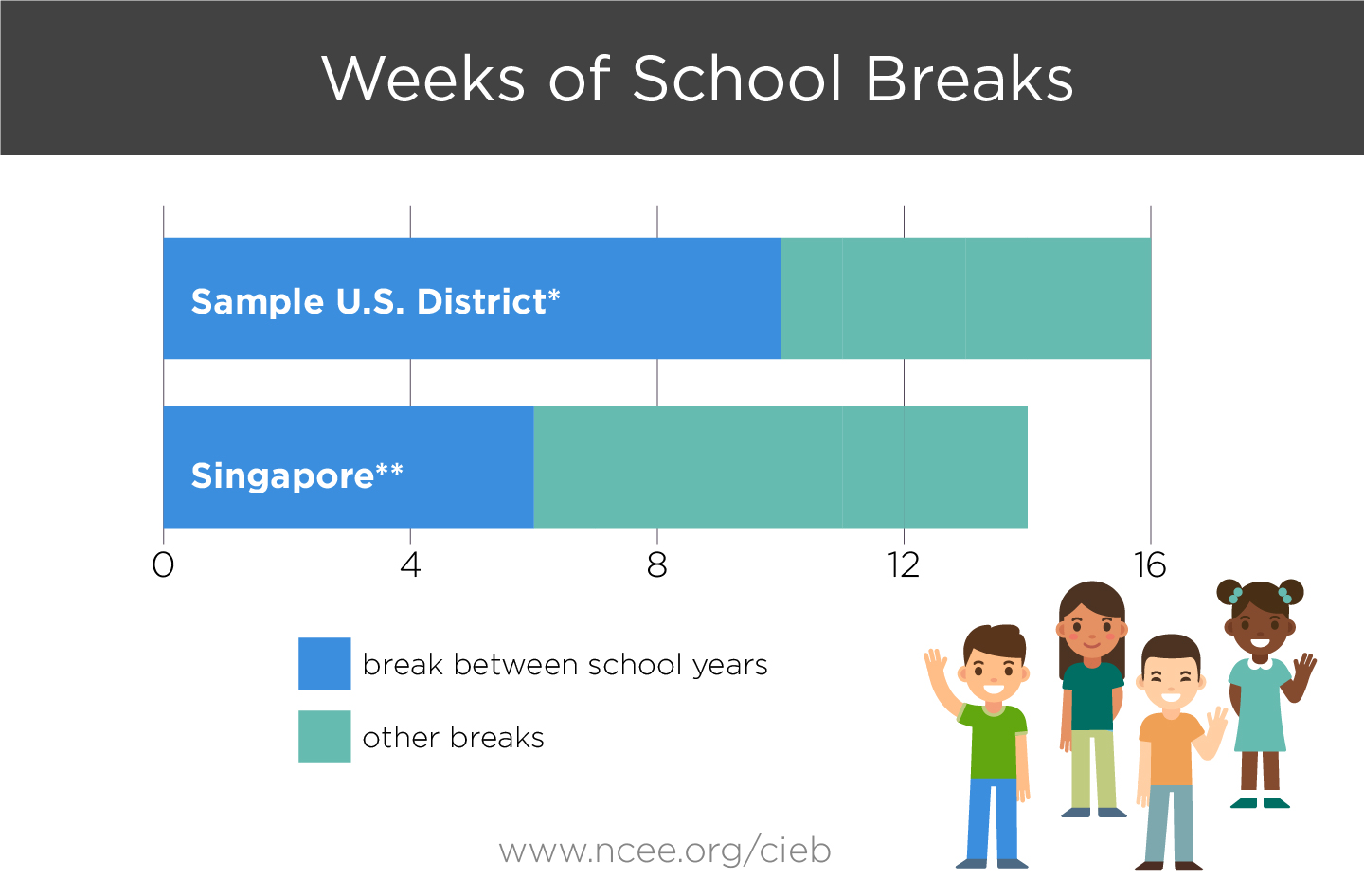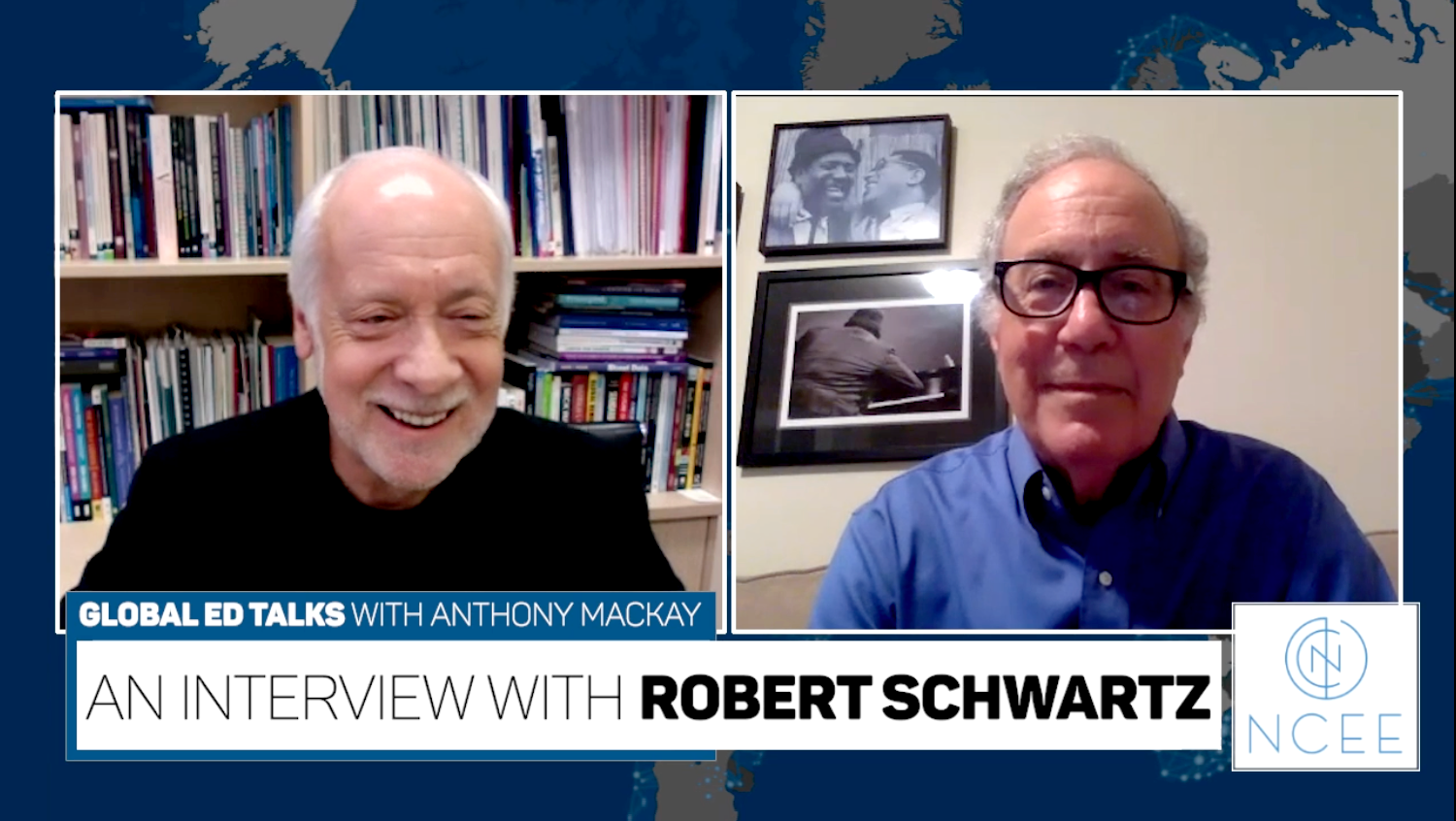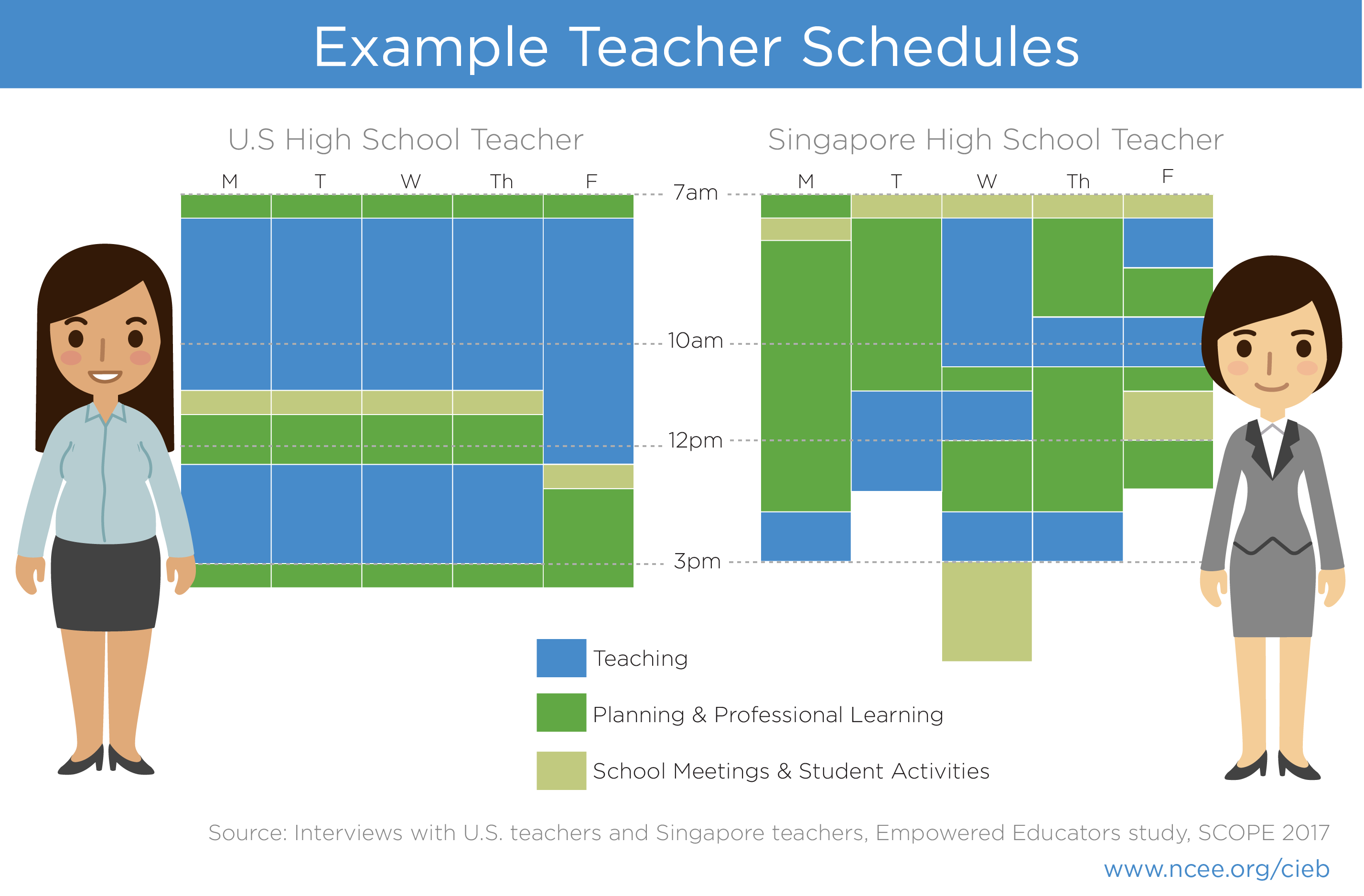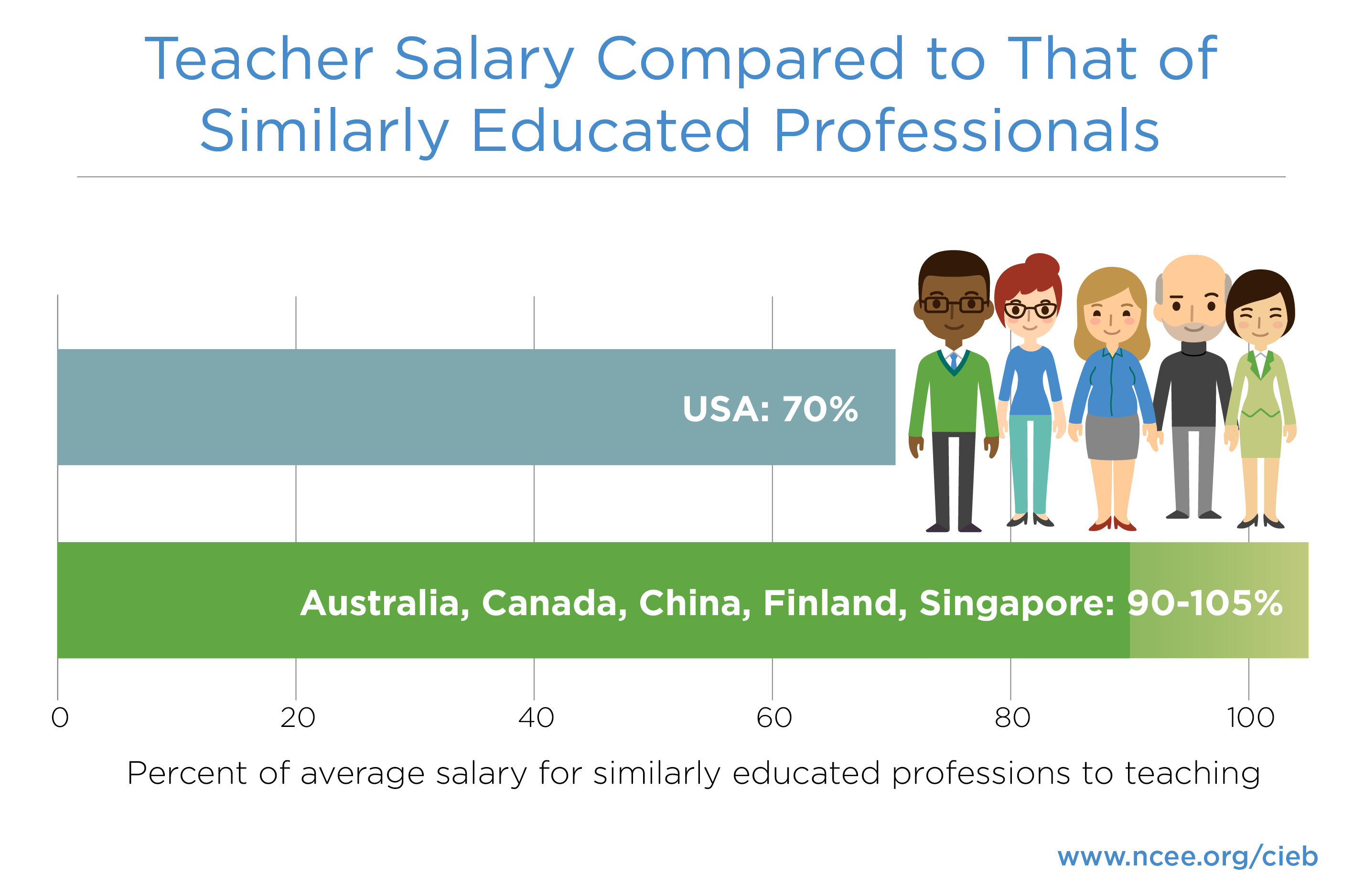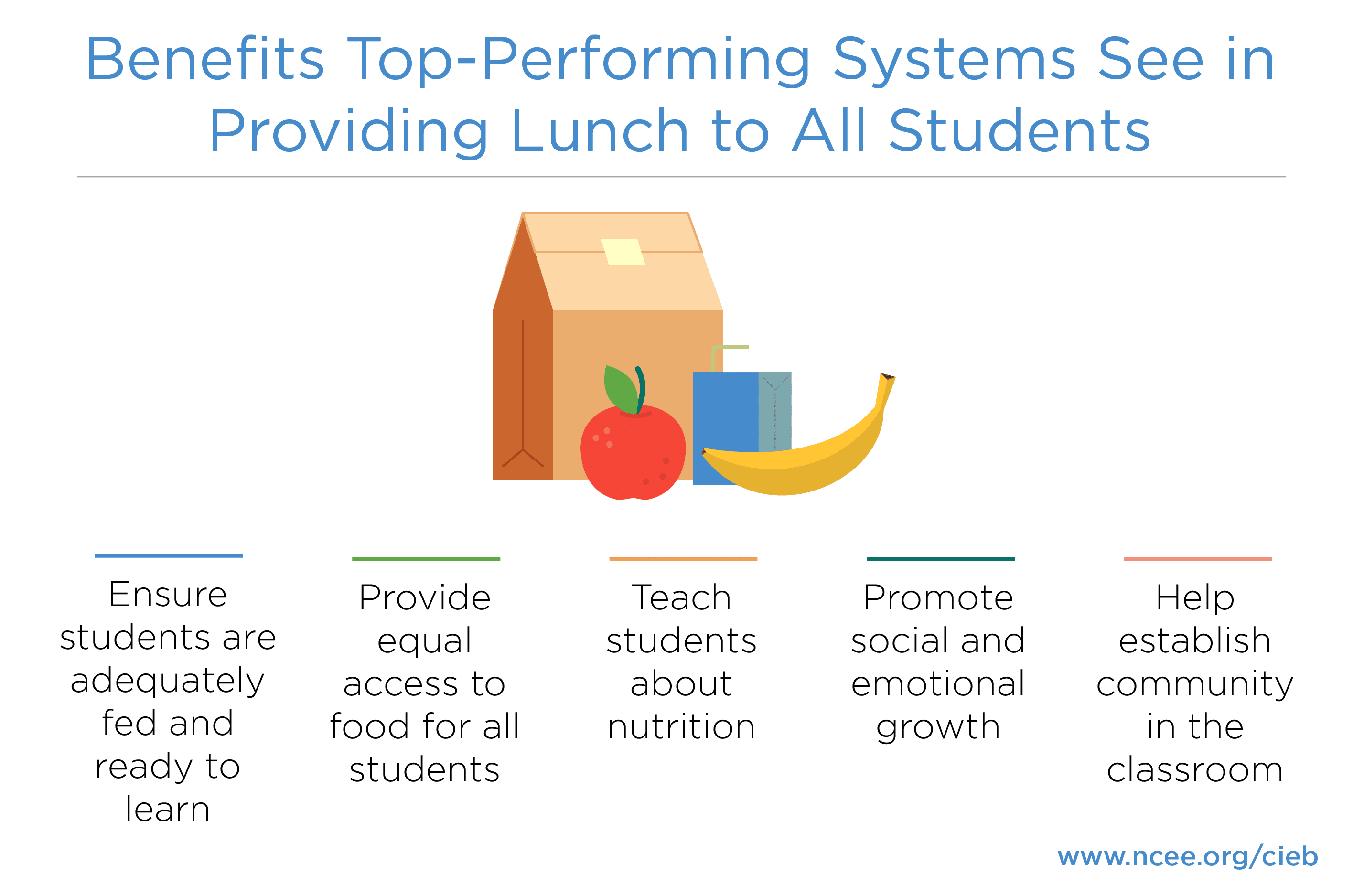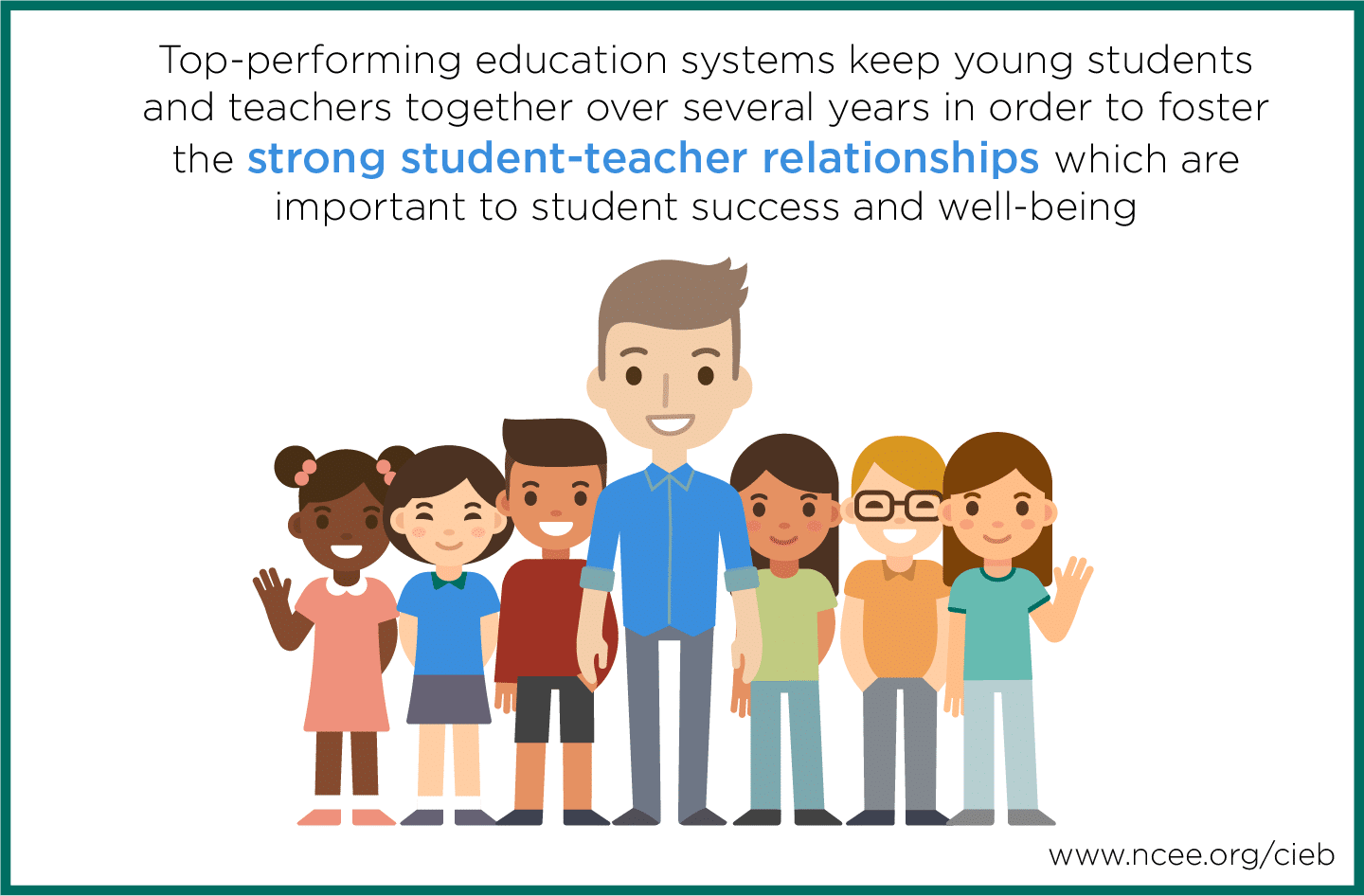Onward
Together

Onward

Together
Onward

Together
Featured blog posts
In Southern Maryland, more than 80 leaders came together not just to talk about the teacher shortage—but to build a bold, inclusive pipeline that reflects the students they serve and the future they deserve.
The goal was clear and compelling: to engineer an educational system that isn’t just about maintaining standards but setting them.
In the heart of Pennsylvania, a story is unfolding—one that paints a picture of unity, vision, and commitment towards early childhood education (ECE). This is a story of a varied group of individuals, from educators to advocates, funders to agency leaders, coming together to create a sustainable partnership that consistently provides equitable opportunities for ...
NCEE and legislators grapple with questions about the future of education systems at the 2022 National Conference of State Legislatures (NCSL) Legislative Summit.
A Las Vegas principal used the upheaval of the pandemic as a chance to ground the school’s professional learning in teacher-led inquiry.
While U.S. districts are very focused on how to use the summer to address pandemic-related learning loss specifically, there are still long-standing concerns about the “summer learning slide” due to the long break from school, especially for disadvantaged students who often do not have access to the learning opportunities that their more advantaged ...
In this report from the 2022 International Summit on the Teaching Profession, NCEE summarizes the latest thinking from high-performing education systems about how schools can responsibly harness new technologies, build more inclusive communities, and help to secure a sustainable future.
In this Global Ed Talk, NCEE CEO Anthony Mackay speaks with Bob Schwartz, professor at Harvard University and co-founder of the Pathways to Prosperity network, about what America needs to do to update its CTE system to match leading countries around the world.
Top-performing education systems have long understood the value of providing teachers with time in their schedules outside of teaching: time to prepare lessons, observe and collaborate with their peers, conduct research to improve their practice, and build relationships with students and families. The chart above compares a U.S. high school teacher’s schedule with ...
By Nathan Driskell A new report from the National Council on Teacher Quality (NCTQ) finds that professions that require similar education and credentials as teaching pay about 40 percent more, on average, than teaching. In other words, teachers only make 70 percent as much as similarly educated professionals. This finding suggests that the ...
Providing meals for all students, and using meal times as a way to promote learning, is a policy many top-performing systems use to ensure that all students are healthy and ready to learn.
California’s new plan of providing funds for low-income students to save for post-secondary education is a strategy used by some top-performing countries such as Canada.
In this interview, Harvard Graduate School of Education Professor Jal Mehta argues that our current system of schools—designed in the early 20th century industrial era—need to become modern organizations capable of supporting deeper learning for all students.
By Jackie Kraemer Like the United States, education systems across the globe are investing more in summer programs for students and expanding them to include both academic support to catch students up as well as enrichment and recreational activities to re-engage them, in response to a year of disruptions in school due to ...
By Jackie Kraemer The idea that all students need an adult who is responsible for them and their well-being at school has gained traction this past year, as so many students were disconnected from school. One strategy top-performing systems use to accomplish this goal is to keep young students and teachers together over ...
In this Global Ed Talk, NCEE CEO Anthony Mackay speaks with Bob Schwartz, professor at Harvard University and co-founder of the Pathways to Prosperity network, about what America needs to do to update its CTE system to match leading countries around the world.
Top-performing education systems have long understood the value of providing teachers with time in their schedules outside of teaching: time to prepare lessons, observe and collaborate with their peers, conduct research to improve their practice, and build relationships with students and families. The chart above compares a U.S. high school teacher’s schedule with ...
By Nathan Driskell A new report from the National Council on Teacher Quality (NCTQ) finds that professions that require similar education and credentials as teaching pay about 40 percent more, on average, than teaching. In other words, teachers only make 70 percent as much as similarly educated professionals. This finding suggests that the ...
Providing meals for all students, and using meal times as a way to promote learning, is a policy many top-performing systems use to ensure that all students are healthy and ready to learn.
California’s new plan of providing funds for low-income students to save for post-secondary education is a strategy used by some top-performing countries such as Canada.
In this interview, Harvard Graduate School of Education Professor Jal Mehta argues that our current system of schools—designed in the early 20th century industrial era—need to become modern organizations capable of supporting deeper learning for all students.
By Jackie Kraemer Like the United States, education systems across the globe are investing more in summer programs for students and expanding them to include both academic support to catch students up as well as enrichment and recreational activities to re-engage them, in response to a year of disruptions in school due to ...
By Jackie Kraemer The idea that all students need an adult who is responsible for them and their well-being at school has gained traction this past year, as so many students were disconnected from school. One strategy top-performing systems use to accomplish this goal is to keep young students and teachers together over ...

